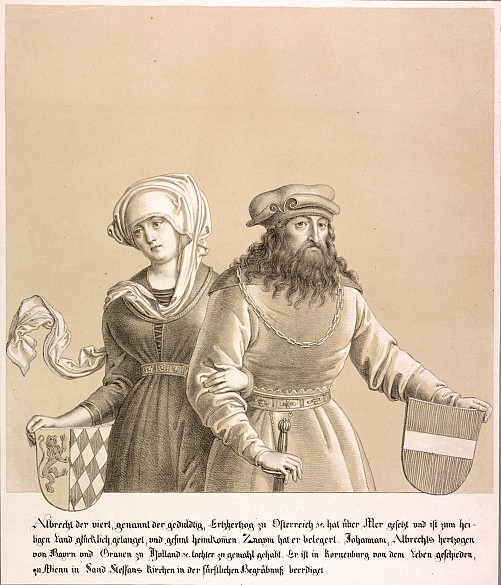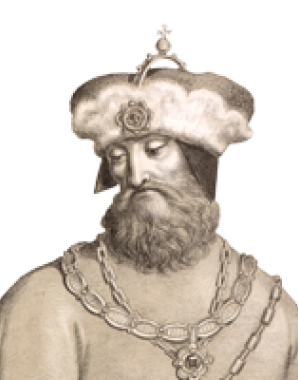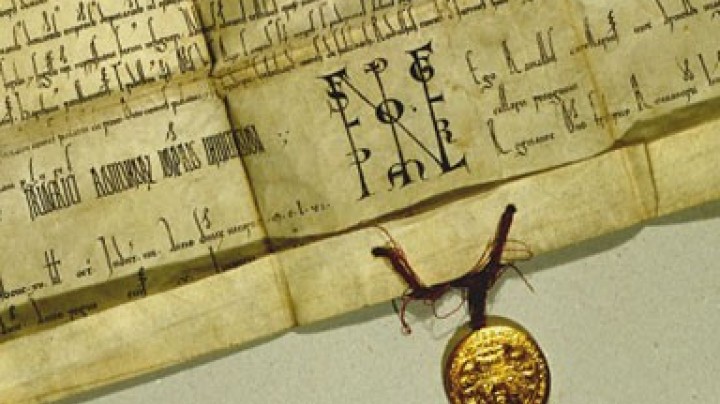Albrecht IV: Caught between two fronts
Albrecht IV attempted to continue his father Albrecht III’s policies, which had given the dynasty new standing, with varying success. His greatest adversaries were to be found within the family: his cousins from the Leopoldine line were insisting on their rights, whatever the cost …
Albrecht IV was the only son of Duke Albrecht III and his second wife Beatrice of Zollern. His father was the founder of the Albertine line of the dynasty that had arisen after the division of 1379. However, this division had been temporarily suspended because of the early death of his brother Leopold III in the battle of Sempach in 1386, since the latter’s four sons were still minors.
After the death of Albrecht III the dynasty faced a new division: it was Albrecht’s will that the territories should remain undivided in order to prevent the weakening of the dynasty as a whole. This was strongly opposed by his nephew from the Leopoldine line, who had in the meantime gained his majority. The members of the Leopoldine branch demanded their portion of the inheritance from their cousin Albrecht IV, who had been appointed by his father as his successor. Albrecht, who is described by his biographers as rather unworldly, did not distinguish himself in the political arena and left the field to his relative Duke Wilhelm, the eldest member of the Leopoldine branch of the dynasty.
The Treaty of Hollenburg in 1395 provided for joint rule by the cousins from the two lines. However, vague formulations allowed various interpretations. The brothers from the Leopoldine branch interpreted this to mean joint rule in the territories of the Albertine line (Lower and Upper Austria), which they were unwilling to concede to Albrecht in the Leopoldine dominions (Styria, Carinthia, Carniola, Tyrol and the Forelands). The problem was that on the Leopoldine side there were four brothers that had to be provided for, while in the richer Albertine lands which brought in far more income there was only one heir, namely Albrecht IV.
The discord between the rulers led to conflicts of loyalty. Sections of the nobility and the boroughs found themselves on opposing sides and numerous local conflicts brought the land to the verge of civil war. The situation was aggravated by the interference of neighbouring dynasties, who were attempting to exploit the power vacuum left after the death of Albrecht III. Following his father’s political line, Albrecht tried to achieve a rapprochement with the Luxembourgs. The latter were also involved in an internal family crisis at the time. Wenceslas IV, the eldest son of Emperor Charles IV, who was the polar opposite of his father, a man regarded as the archetypical embodiment of an ideal imperial sovereign, possessed both the imperial as well as the Bohemian crown.
Wenceslas’s adversary within the family was his younger half-brother Sigismund, who thanks to his marriage to Mary of Hungary had now become King of Hungary and Croatia. He counted the Habsburgs among his supporters. When Wenceslas was removed from office by the electors in 1400 because of his failure to act, Sigismund promptly had him taken prisoner. The deposed emperor was consigned to the custodianship of the Austrian dukes. In return for his support for Sigismund’s claims to power in Bohemia, he held out the prospect of the Hungarian crown to Albrecht and appointed him his viceroy in Hungary.
Relations with Sigismund cooled when the imprisoned Wenceslas succeeded in fleeing to Vienna and the dubious role played by the Habsburgs in his escape. In order to demonstrate his unbroken loyalty Albrecht supported Sigismund in the siege of the Moravian border town of Znaim (Znojmo) in summer 1404. During the campaign Albrecht became ill with dysentery. The duke died on his way back to Vienna in Klosterneuburg, aged just twenty-seven. He was buried in St Stephen’s Cathedral in Vienna.















